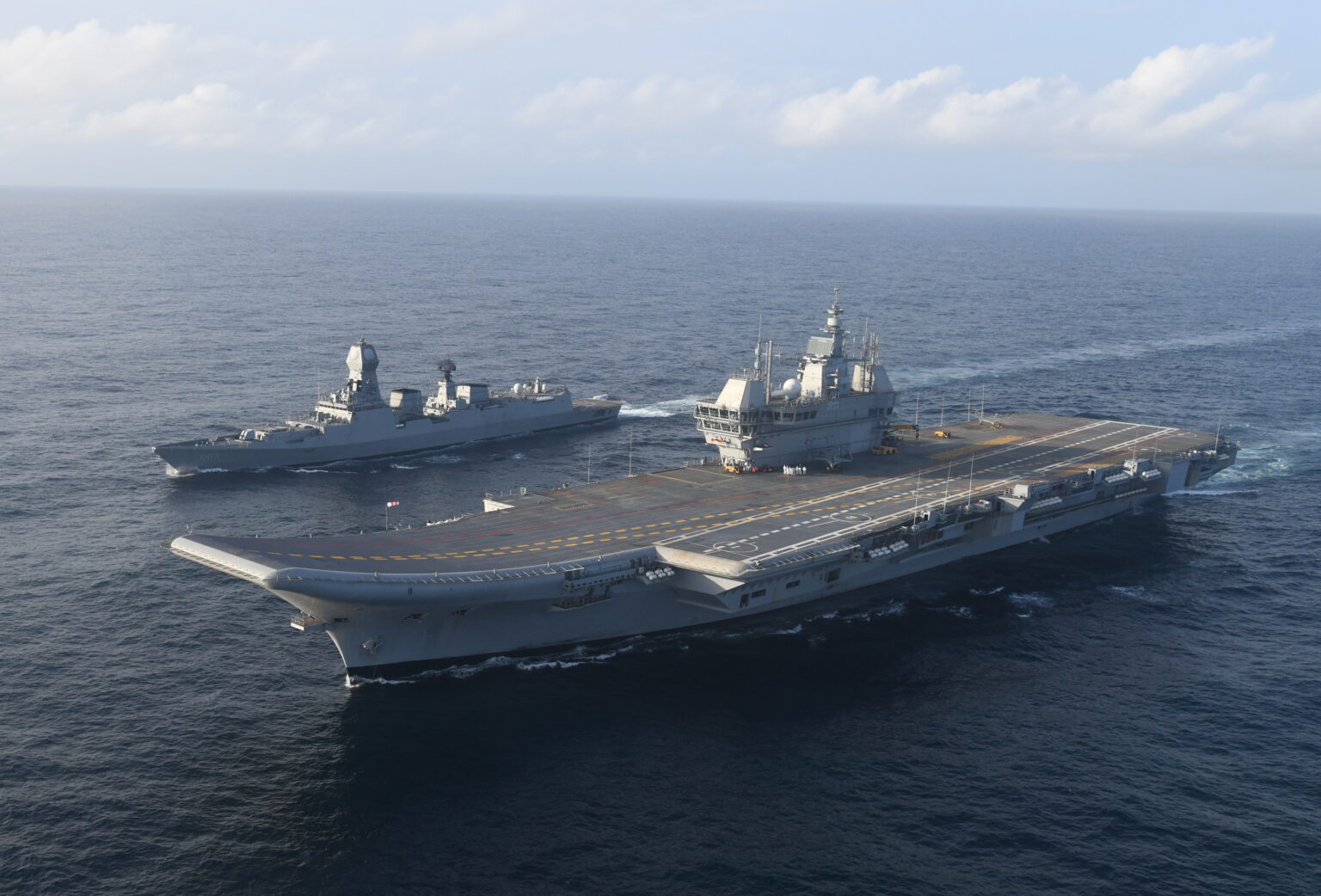The aircraft carrier has an overall indigenous content of 76%, the navy said. It is also a perfect example of the government’s quest for Atmanirbhar Bharat and provides a thrust for its make-in-India initiative, it added.

INS Vikrant during its sea trials, image Wikimedia
On Thursday, Cochin handed over the indigenous aircraft carrier INS Vikrant to the Indian Navy. The Navy’s in house Directorate of Naval Design designed the vessel and will commission it on 15th August.
The ship is named after India’s first aircraft carrier which participated in the 1971 Indo-Pak war. INS Vikrant (R11) was originally a Majestic class aircraft carrier. It was laid down by the British navy during world war II and then put on hold. Initially named HMS Hercules, India purchased the aircraft in 1957 and renamed it as INS Vikrant. As of 1993, before its decommissioning, Vikrant was probably among the oldest vessels still serving anywhere in the world.
It is no surprise that with Vikrant and Viraat being obsolete and INS Vikramaditya (Originally Admiral Gorskov) being the only ship left, the Indian navy would want a modern aircraft carrier. Its rival China commissioned its latest aircraft carrier Liaoning in 2012 which has three aircraft carriers.
Bigger than Her Predecessor

The new aircraft carrier has a displacement of 45,000 tonnes making it bigger and more advanced than her predecessor. By contrast, her predecessor displaced 16,000 tonnes. INS Vikrant is powered by four gas turbines totaling 88 MW of power, giving her a maximum speed of 28 knots.
It was built at an overall cost of Rs 20,000 crore under a contract between the Defence Ministry and the shipyard. Its building progressed in three stages ending in May 2007, December 2014, and October 2019, respectively. Meanwhile, the ship’s keel was laid in February 2009.
After her commissioning, the Western Naval Command will take INS Vikrant under their command. INS Vikrant has an overall indigenous content of 76% and is a perfect example of Atmanirbhar Bharat. It provides the necessary thrust to the government’s make-in-India initiative, the Navy said. With its delivery, India has joined a select group of nations having the capability to design and construct an aircraft carrier.
INS Vikrant Built with High Degree Automation
Vikrant was built with a high degree of automation for machinery operation, ship survivability, and navigation. Vikrant can accommodate various fixed wing and rotary aircraft and operate an air wing of 30 aircraft. This consists of MIG-29K fighter jets, Kamov-31, and MH-60R multi-role helicopters with an assortment of indigenous helicopters and LCA (light combat aircraft).
The carrier also has several indigenous components made by Indian PSUs like BEL, BHEL private industries like Larsen & Toubro, and other MSMEs. SAIL combined with the DRDO and the Indian Navy to produce the warship-grade steel needed for this behemoth. India now uses indigenous steel to build all its warships, say, defense officials.
INS Vikrant was delivered to the Navy after extensive trials between August 2021 and July 2022. During these trials, I the performance of its hull, main propulsion, auxiliary equipment, aviation facilities, and other equipment proved to be satisfactory. The delivery comes after a long set of challenges thrown in by the Covid pandemic and altered geopolitical conditions.
The Navy will soon commission it and add to its existing range of capital ships. INS Vikrant, along with INS Vikramaditya will bolster the Indian Navy’s presence in the Indian Ocean region. It will also fulfill its quest to be a blue-water navy.
(Inputs, Indian Express)













